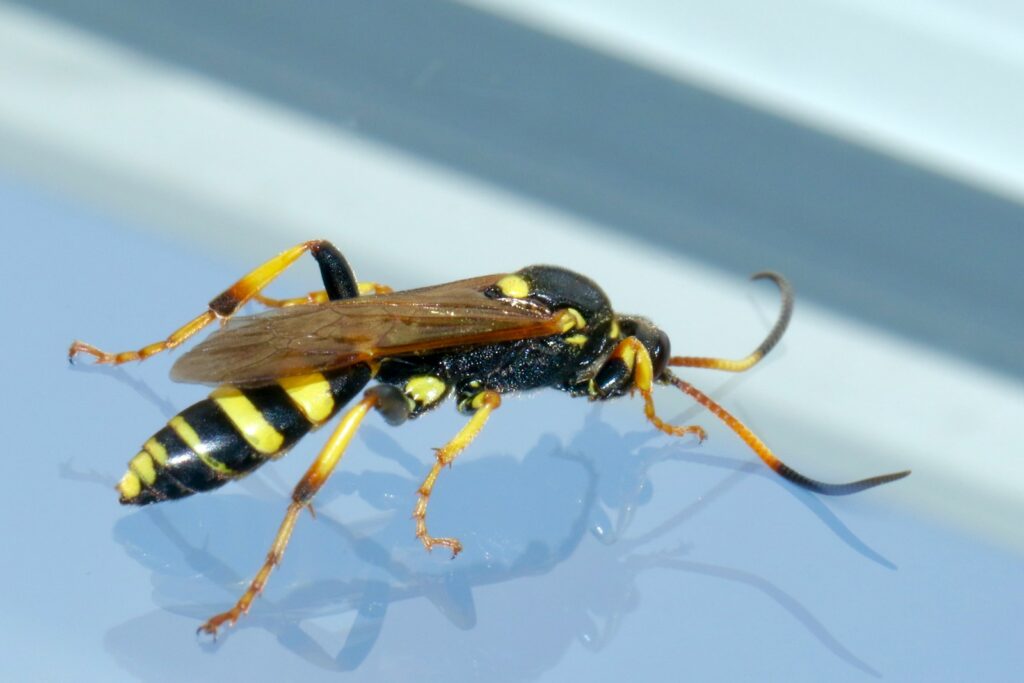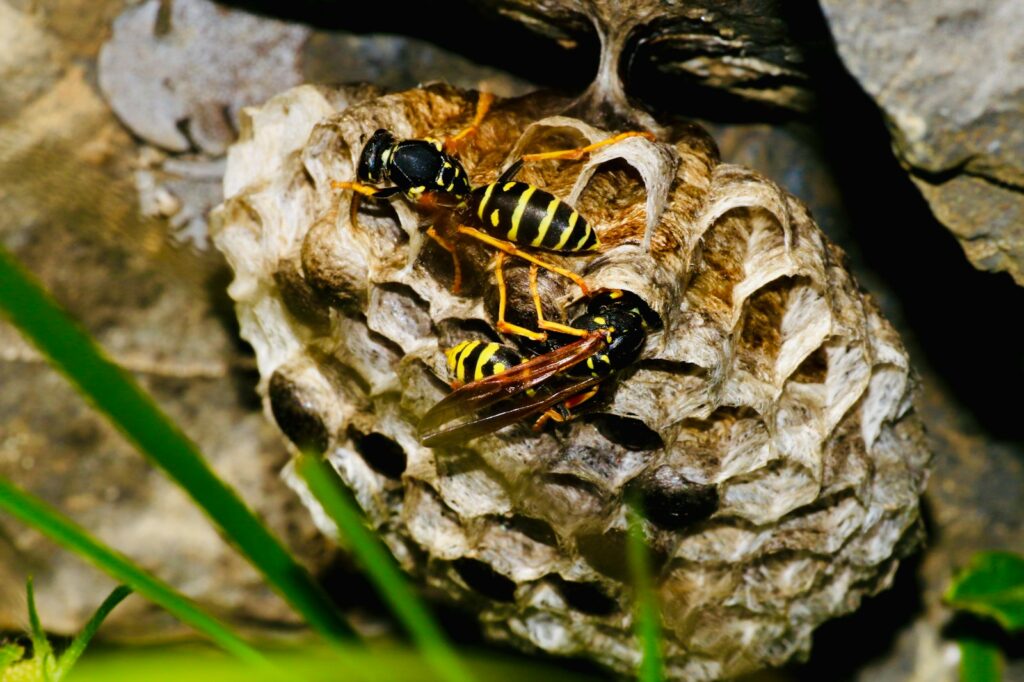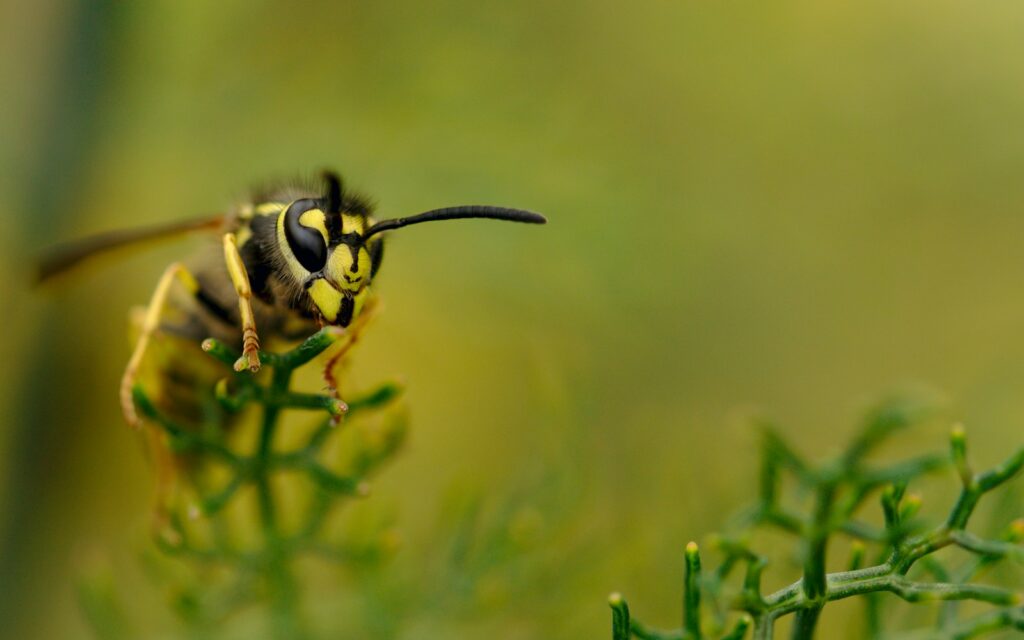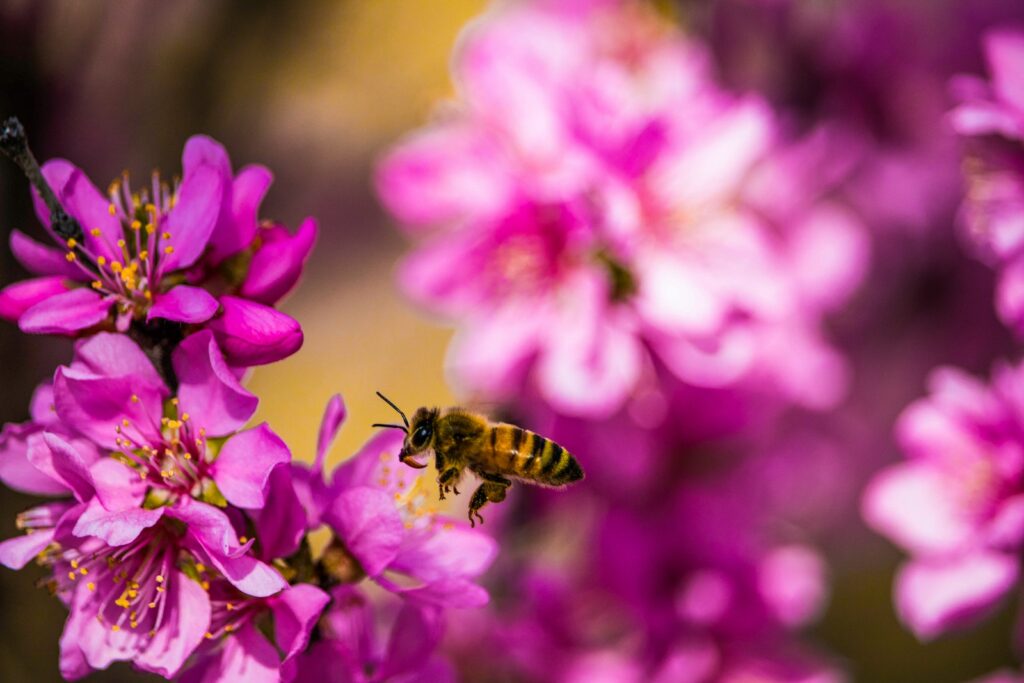Wasps have long been viewed with apprehension and fear, often dismissed as aggressive pests without redeeming qualities. This negative reputation overshadows their crucial ecological roles that extend far beyond their infamous stings. While we commonly associate wasps with disrupted picnics and painful encounters, these misunderstood insects serve as vital components in maintaining balanced, functioning ecosystems worldwide. From pollination to pest control, wasps perform numerous ecological services that benefit not only natural habitats but also human agricultural systems. This exploration reveals how certain wasp species function as ecological keystones, showcasing why conservation efforts should extend to these often-maligned but indispensable insects.
The Surprising Diversity of Wasps

When most people think of wasps, they envision the familiar yellow jackets or hornets that can disrupt outdoor gatherings, but this represents a tiny fraction of wasp diversity. The order Hymenoptera contains over 100,000 described wasp species with estimates suggesting tens of thousands more await discovery. This remarkable diversity includes solitary hunters, social nest-builders, microscopic parasitoids, and gentle fig pollinators, spanning sizes from barely visible to several inches long. Wasps have evolved across nearly every terrestrial ecosystem on Earth, from tropical rainforests to arctic tundra, each species adapting to fill specific ecological niches. Understanding this diversity helps explain why wasps cannot be easily categorized as either beneficial or harmful—their ecological roles are as varied as their species.
Wasps as Natural Pest Controllers

Perhaps the most significant ecological contribution of many wasp species lies in their role as biological pest controllers. Predatory wasps hunt and capture tremendous numbers of caterpillars, aphids, flies, and other insects that would otherwise damage crops and garden plants. A single paper wasp colony can remove thousands of caterpillars from a garden over a growing season, providing free pest management services. Parasitoid wasps take this further by laying eggs inside specific host insects, where their larvae develop while consuming the host from within, eventually killing it—a control method so targeted it often affects only specific pest species. Agricultural researchers increasingly recognize these natural control mechanisms as sustainable alternatives to chemical pesticides, with some commercial growers now deliberately attracting beneficial wasps to their fields. The economic value of this ecosystem service reaches billions of dollars annually in avoided crop damage and reduced pesticide costs.
Specialized Parasitoid Wasps and Ecological Balance

Parasitoid wasps represent one of nature’s most sophisticated mechanisms for maintaining insect population balance. Unlike true parasites that merely harness resources from hosts, parasitoids ultimately kill their hosts, positioning them as unique predators with remarkable specialization. Many species have evolved to target specific host insects with surgical precision—for example, the tiny Trichogramma wasps that exclusively parasitize moth eggs, or braconid wasps that target specific caterpillar species. This high degree of specialization allows parasitoid wasps to regulate host populations without eliminating them entirely, maintaining a critical balance in insect communities. When ecosystem disruptions like habitat loss or pesticide use reduce parasitoid wasp populations, their target species often experience population explosions that can trigger cascading ecological effects. This relationship exemplifies how wasps function as keystone species whose influence extends far beyond their small size.
Wasps as Unexpected Pollinators

While bees receive most recognition for pollination services, many wasp species serve as significant pollinators that complement bee activities. Unlike bees, most wasps lack the specialized pollen-collecting structures, yet they still transfer pollen between flowers while foraging for nectar as an energy source. Some plants have evolved to specifically attract wasps as their primary pollinators, including certain orchid species that mimic female wasps to trick males into attempting to mate with the flowers, thereby transferring pollen. The relationship between fig wasps and fig trees represents one of the most remarkable pollination partnerships in nature, where each of the 750+ fig species depends on a specific wasp species for reproduction—without these specialized wasps, fig trees could not produce seeds. This mutualistic relationship has persisted for over 80 million years, demonstrating the evolutionary importance of wasps in maintaining plant diversity.
Fig Wasps: A Remarkable Evolutionary Partnership

The relationship between fig wasps and fig trees exemplifies one of nature’s most intricate coevolutionary systems worth exploring in greater detail. Each fig species depends on a specific wasp species that enters the fig to pollinate its internal flowers, in exchange receiving an exclusive nursery for its offspring. The female fig wasp, often only a few millimeters long, squeezes through a tiny opening in the fig, frequently losing her wings in the process on this one-way journey. Once inside, she pollinates the female flowers while laying eggs in specialized gall flowers, eventually dying inside the fig she has serviced. Her offspring develop within the fig, with males emerging first to mate with females before drilling exit tunnels through which the fertilized females escape, carrying pollen to continue the cycle. This intricate system supports not only fig reproduction but also provides crucial food resources for countless birds and mammals that depend on figs, making these tiny wasps keystones for entire forest ecosystems.
Social Wasps as Ecosystem Engineers

Social wasps like yellow jackets, hornets, and paper wasps function as ecosystem engineers through their nest-building activities and predatory behaviors. Their elaborate nests, constructed from chewed wood fiber mixed with saliva to form a paper-like material, create microhabitats that support diverse organisms. Abandoned wasp nests provide shelter for numerous insects, spiders, and even small vertebrates, contributing to biodiversity long after the original builders have departed. The hunting activities of social wasp colonies can significantly alter local insect community composition, as a single mature colony may capture tens of thousands of prey insects during a season to feed developing larvae. When foraging for nest materials, social wasps inadvertently clear away dead wood and plant matter, contributing to decomposition processes and nutrient cycling. These combined activities demonstrate how social wasps, despite their occasional conflicts with humans, serve as integral components in maintaining healthy ecosystem function.
Wasps in Food Webs: Supporting Biodiversity

Wasps occupy critical positions within complex food webs, serving both as predators and prey that support biodiversity across multiple trophic levels. As predators, wasps help regulate populations of numerous arthropods, preventing any single species from dominating and potentially reducing plant diversity through unchecked herbivory. Simultaneously, wasps themselves provide an important food source for many birds, reptiles, amphibians, mammals, and other insects, transferring energy up the food chain. The protein-rich larvae in wasp nests represent particularly valuable nutritional packages for animals that can access them, such as bears, badgers, and specialized “wasp-hawk” birds. Even parasite-infected wasps contribute to biodiversity by supporting various organisms that have evolved to exploit them, including fungi, mites, and other specialized parasites. This multi-directional flow of energy and resources through wasp-connected pathways strengthens ecosystem resilience and stability.
Wasps as Scavengers and Decomposers

Beyond their roles as predators and pollinators, many wasp species perform valuable ecosystem services as scavengers and decomposers. Yellow jackets and hornets, particularly in late summer when colonies reach peak size, actively scavenge dead insects and small vertebrates, helping to clean ecosystems of carrion. Some specialized wasps target already-decomposing organic matter, accelerating the breakdown process and nutrient recycling. By processing this organic material, scavenging wasps prevent potential disease spread while returning valuable nutrients to the soil system. The protein these wasps collect from carrion provides essential nutrition for their developing larvae, demonstrating how wasps convert what would be waste material into productive biomass. This scavenging behavior becomes particularly important in environments where other decomposers might be limited by climate or seasonal factors.
Wasp Venom: From Ecological Function to Medical Applications

Wasp venom, often viewed solely as a painful defensive mechanism, serves sophisticated ecological functions while offering promising applications for human medicine. In nature, wasp venom not only deters potential predators but also helps paralyze prey and contains antimicrobial compounds that preserve captured insects for larvae consumption. Scientists have discovered numerous bioactive compounds within wasp venoms that show potential for treating conditions including cancer, bacterial infections, and neurodegenerative diseases. For example, a peptide called Polybia-MP1, isolated from a Brazilian wasp, selectively targets and destroys cancer cells while leaving healthy cells intact. The neurotoxic properties of certain wasp venoms have provided insights into nerve function that inform research on conditions like Parkinson’s disease. This dual ecological and biomedical significance of wasp venom exemplifies how ecosystem components often harbor unexpected benefits for human welfare that could be lost if species disappear.
Habitat Loss and Its Impact on Beneficial Wasps

Beneficial wasp populations face mounting pressures from habitat destruction and fragmentation, threatening their ecological functions. Many specialist wasp species depend on specific habitat features like dead wood, bare soil patches, or particular host plants to complete their life cycles. When these elements disappear through development, agricultural intensification, or urbanization, wasp diversity dramatically declines. Parasitoid wasps, which often require specific host insects that themselves depend on particular plants, suffer cascading effects from habitat alterations. The loss of flowering resources due to monoculture farming particularly impacts adult wasps that require nectar, even if their larvae develop as predators or parasitoids. Research shows that even small habitat improvements, such as maintaining hedgerows or flower strips within agricultural landscapes, can significantly boost beneficial wasp populations and their associated ecosystem services. Conservation efforts increasingly recognize that protecting wasps requires preserving complex habitat mosaics rather than just isolated reserves.
Climate Change Threats to Wasp-Dependent Systems

Climate change poses particular challenges to the delicate timing mechanisms that govern many wasp-dependent ecological relationships. As temperatures shift, wasps may emerge earlier or later in the season, potentially missing critical synchronization with their host insects or flowering plants. The fig wasp-fig tree mutualism, for instance, depends on precise timing that climate disruption threatens to unbalance, potentially affecting entire forest communities that rely on fig fruits. Extreme weather events like droughts, floods, and unseasonal freezes can devastate wasp populations, with some studies showing up to 80% colony mortality during weather anomalies. Range shifts driven by changing climate conditions may create mismatches between wasps and their traditional prey or host species, disrupting pest control services. The complex life histories of many beneficial wasps, particularly parasitoids with multiple host stages, make them especially vulnerable to climate disruption as each relationship in their life cycle faces potential desynchronization.
Supporting Beneficial Wasps in Managed Landscapes

Practical steps can be taken in both agricultural and urban settings to support beneficial wasp populations and their ecological services. Creating diverse plantings that provide continuous blooming resources throughout the growing season ensures adult wasps have access to crucial nectar sources. Reducing or eliminating broad-spectrum pesticide use prevents unintended harm to beneficial wasps, with studies showing that even sublethal pesticide exposure can impair wasps’ hunting and navigation abilities. Maintaining undisturbed areas within landscapes—including brush piles, unmowed sections, and dead wood—provides essential nesting sites for many solitary wasps that require such microhabitats. Some commercial growers now install artificial nesting structures specifically designed for beneficial wasps, such as hollow tubes for cavity-nesting species or specialized “wasp houses” that attract predatory species. These supportive practices not only enhance natural pest control but also contribute to broader biodiversity conservation goals while reconnecting human-dominated landscapes with natural ecological processes.
Changing Public Perception of Wasps

Despite their ecological importance, wasps continue to suffer from negative public perception that hinders conservation efforts and often leads to unnecessary destruction of beneficial populations. Educational initiatives that highlight wasps’ positive contributions show promise in shifting these attitudes, with studies demonstrating that people who understand wasp ecology display significantly more positive attitudes toward them. Citizen science programs that engage the public in monitoring wasp diversity help both generate valuable data and connect participants emotionally with these misunderstood insects. Media coverage that moves beyond simplistic “dangerous pest” narratives to showcase wasps’ fascinating behaviors and ecological roles can reach broader audiences with conservation messaging. As public awareness grows about ecosystem services like pollination and natural pest control, the opportunity exists to expand this appreciation beyond beloved insects like butterflies and bees to include the equally important but less charismatic wasps. This perception shift represents a crucial step toward more holistic ecosystem conservation that protects even unpopular species based on their ecological value rather than their appeal.
Conclusion

The scientific evidence clearly demonstrates that many wasp species function as ecological keystones, performing irreplaceable services that maintain ecosystem health and support biodiversity. From the exquisite specialization of fig wasps to the broad pest control benefits of predatory species, wasps contribute to ecological stability through multiple pathways. As habitat loss, pesticide use, and climate change threaten these important insects, conservation approaches must expand to include wasps alongside more popular pollinators. By recognizing wasps not merely as nuisances but as essential ecosystem partners, we can develop more effective conservation strategies that protect the full spectrum of beneficial insects. The next time a wasp buzzes nearby, it’s worth considering that its presence likely signals a healthier, more balanced ecosystem—one that ultimately benefits us all.

